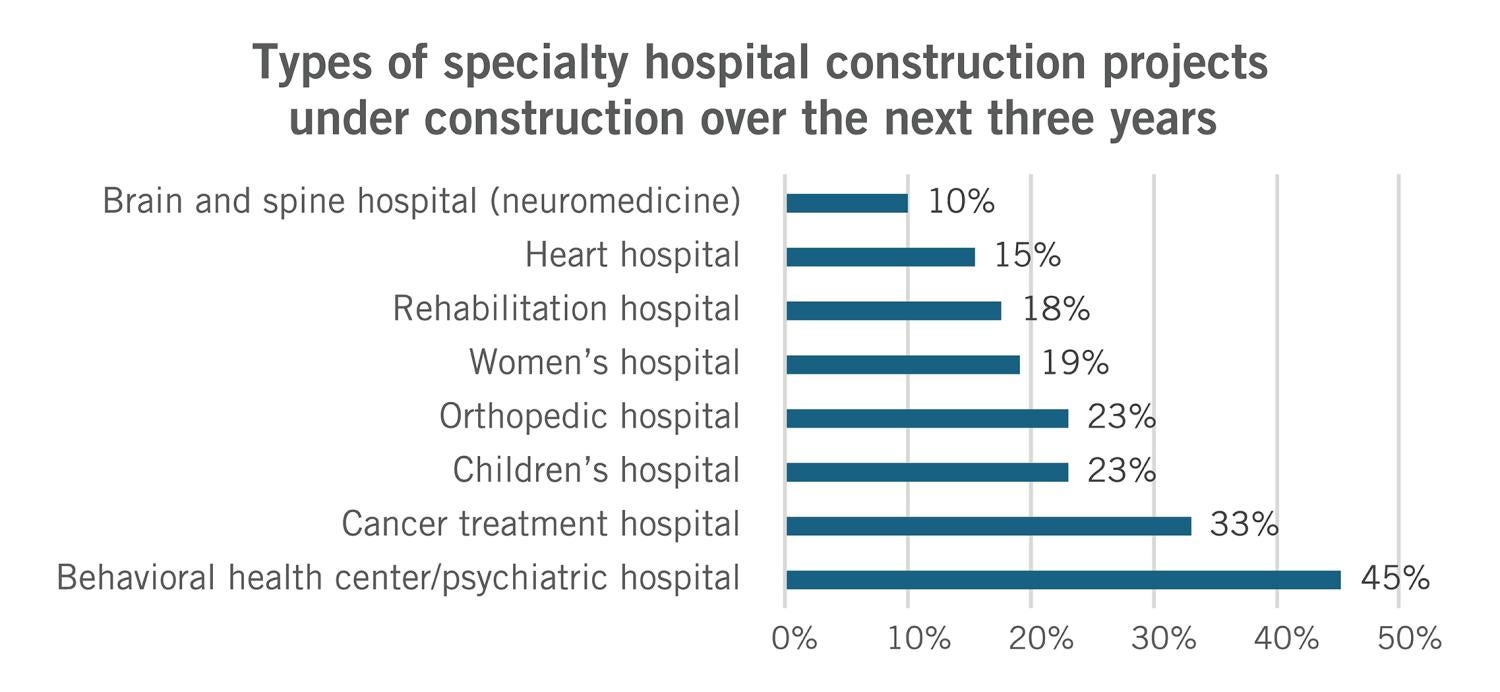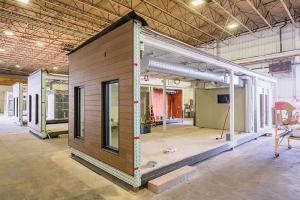Behavioral health projects continue to climb

The chart above shows a breakdown of the types of specialty hospital construction projects currently under construction or planned in the next three years.
Data from the ASHE/Health facilities management 2025 Hospital Construction Survey
The Hospital Construction Survey, conducted annually by the American Society for Health Care Engineering’s Health Facilities Management magazine, provides a wealth of information on yearly construction trends. One of the data points included in the survey is the percentage of respondents who have specialty hospital projects under construction or planned within the next three years across the eight categories shown in the chart on the right.
In 2025, 45% of all Hospital Construction Survey respondents said they were working on a specialty hospital project. This group was then asked to select all project types they had in the works; respondents could select multiple options among the eight. The remainder of this column will focus on this particular subgroup and not the total number of 2025 Hospital Construction Survey respondents.
Since 2015, behavioral health/psychiatric hospitals have ranked No. 1 among specialty hospital projects, and the same was true for this year. Of those working on a specialty hospital project, 45% said they are working on a behavioral health/psychiatric project, 33% are working on a cancer treatment project, 23% have a children’s hospital under or planned for construction, and another 23% said they are working on an orthopedic hospital.
When looking across demographic settings — urban, suburban and rural — the percentage of respondents who report working on one type of specialty project or another does shift, but one thing remains true: Behavioral health/psychiatric hospitals are the leading project in each demographic setting. In fact, although the survey’s rural respondents were less likely than their urban and suburban counterparts to say they were working on a specialty hospital project of any kind, they still overwhelmingly reported behavioral health/psychiatric hospitals as their top project type.
Here’s the breakdown. Among urban respondents, 42% are working on a behavioral health project, and both children’s hospitals and cancer treatment hospitals were selected by 32% of these same respondents. For those in the suburban category, behavioral health (44%), cancer treatment (31%) and rehabilitation hospitals (22%) make up the top three. For those in rural settings, the percentages skew heavier toward behavioral health. Of rural respondents, 58% say they are working on a behavioral health/psychiatric hospital. Another 27% selected cancer treatment, and 15% reported an orthopedic hospital on the books.
The focus on behavioral health construction projects is a direct response to an increase in behavioral health needs. But despite this construction push, access to care is still an issue.
According to the 2024 report, “State of the Behavioral Health Workforce,” from the Department of Health and Human Services’ Health Resources & Services Administration, more than one-third of the U.S. population lives in a mental health professional shortage area. The report also notes that rural counties are more likely to face behavioral health care access issues than urban counties.
New facilities should remain a priority, but new ways of thinking about facilities also can provide more care access. In the physical environment, health systems are upgrading network infrastructure to expand telehealth services for behavioral health and reconfiguring spaces to integrate behavioral health into primary care and emergency department facilities. Health systems also are investing in innovative designs, such as emergency psychiatric assessment, treatment and healing units, to help speed recoveries.
In an ideal world, health systems would be able to easily erect new behavioral health care facilities in order to serve any and all who are in need. But when faced with tight budgets and a stretched health care workforce, ideals must make room for innovation to help fill the gaps.




